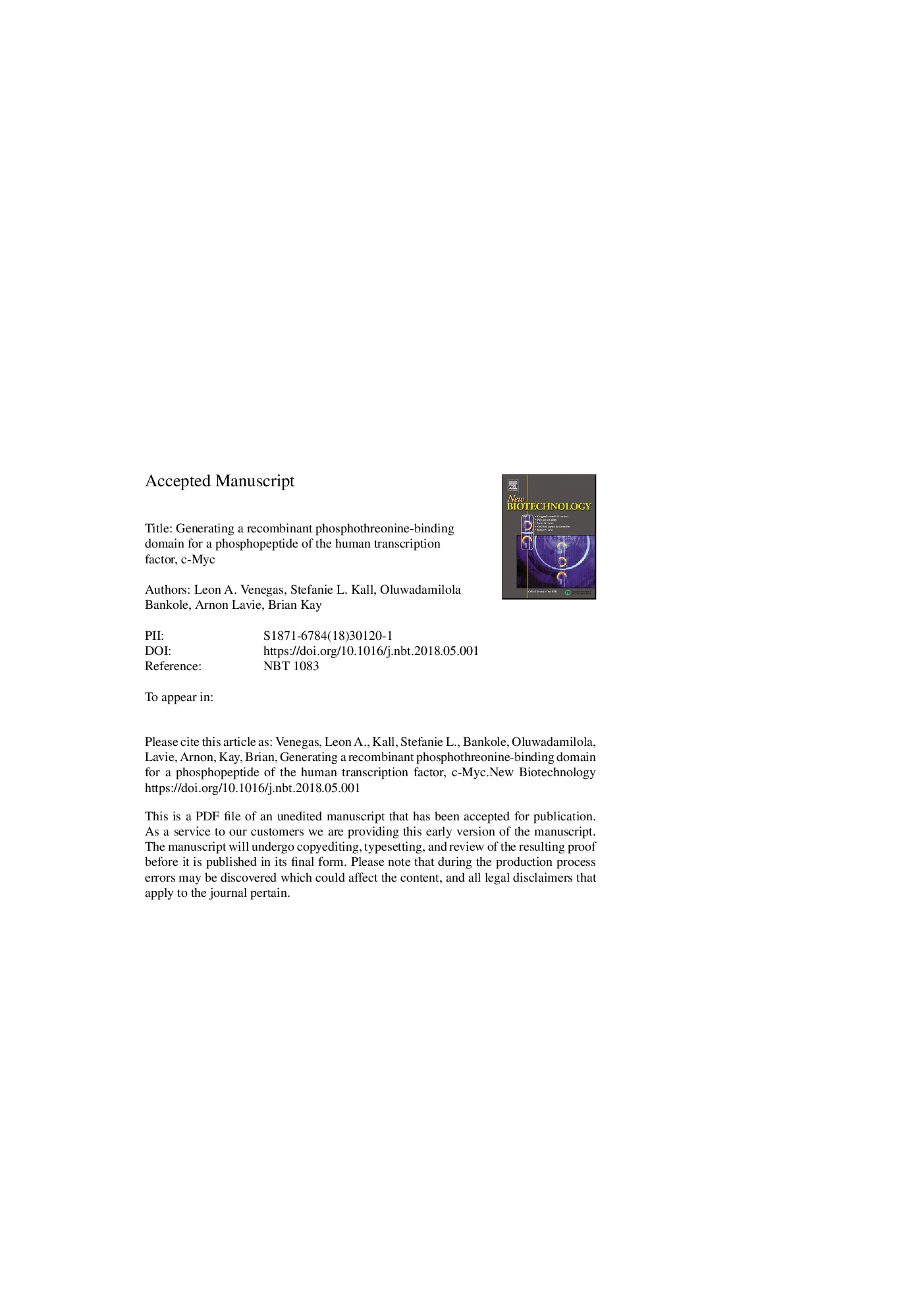| Article ID | Journal | Published Year | Pages | File Type |
|---|---|---|---|---|
| 8941290 | New Biotechnology | 2018 | 35 Pages |
Abstract
Transcription factor c-Myc is an oncoprotein that is regulated at the post-translational level through phosphorylation of two conserved residues, Serine 62 (Ser62) and Threonine 58 (Thr58). A highly specific tool capable of recognizing Myc via pThr58 is needed to monitor activation and localization. Through phage display, we have isolated 10 engineered Forkhead-associated (FHA) domains that selectively bind to a phosphothreonine (pThr)-containing peptide (53-FELLPpTPPLSPS-64) segment of human c-Myc. One domain variant was observed to bind to the Myc-pThr58 peptide with a KD value of 800â¯nM and had >1000-fold discrimination between the phosphorylated and non-phosphorylated peptide. The crystal structure of the engineered FHA Myc-pThr-binding domain (Myc-pTBD) was solved in complex with its cognate ligand. The Myc-pTBD was observed to be structurally similar to the yeast Rad9 FHA1 domain, except that its β4-β5 and β10-β11 loops form a hydrophobic pocket to facilitate the interaction between the domain and the peptide ligand. The Myc-pTBD's specificity for its cognate ligand was demonstrated to be on a par with 3 commercial polyclonal antibodies, suggesting that this recombinant reagent is a viable alternative to antibodies for monitoring Myc regulation.
Keywords
Fbxw7CDKFN3mAbMYCPTBDSCFERKPP2AGSK3βPABCaMKIIMonoclonal antibodyPolyclonal antibodyFibronectin type III domainphosphothreoninePhosphorylationphosphoserinePhage displaycalmodulin-dependent protein kinase IIAntibodyprotein phosphatase 2Aextracellular signal-regulated kinasecyclin-dependent kinaseGlycogen synthase kinase-3β
Related Topics
Physical Sciences and Engineering
Chemical Engineering
Bioengineering
Authors
Leon A. Venegas, Stefanie L. Kall, Oluwadamilola Bankole, Arnon Lavie, Brian K. Kay,
